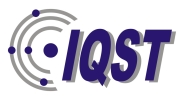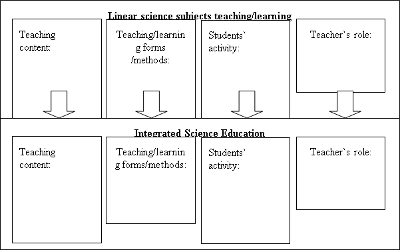Some Philosophic, Didactic and Social Aspects of Integrated Science Education
- To find out the impact of the well-known philosophical trends on education of the 20th century and to discover how those promoted the ideas of integrated science education.
- To learn how integrated science education affects the processes of students’ socialization;
- To analyze and understand the main problems of natural science education in terms of pedagogy;
- To motivate the qualities of natural science education in terms of the constructive aspect of teaching / learning.
One of the most important fields of training is natural science education, the models of which differ in practice and theory of pedagogy. The most relevant problems are integrated natural science education, the development of children’s spirituality in nature, individual education, group work in the classes of science subjects, the possibilities of implementation the reformation ideas of sciences teaching, their search and conditions, etc.
A fundamental attribute of antiquity is the perception of the wholeness of the world. Education looses its versatility in the Middle Ages when dualism takes a prevailing position. Dissolution starts in the 15th – 16th centuries. The epoch of renaissance obtains predominating comprehension of the antique world the basis of which is the experiment (F.Bacon). The settled objective understanding of the Age of Enlightenment (middle of the 18th century – end of the 19th century) looses its previous significance today. We again are back to the whole cognition. According to Z.Gelman, the purpose can be achieved only through the prism of science of culture. The basic task is to raise the awareness of the harmony of the world, and therefore the role of integral processes at school is extremely important as holistic essential visuals are embodied here (Gelman, 1991). Gelman supposes that the end of the 20th century – the beginning of the 21st century is an epoch of integration.
Different trends have formed considering a question of integrated teaching in foreign pedagogy: technocratic, pragmatic, cognitive, humanistic, etc.
W.Gräber and other scientists (2001) maintain that science teaching can be described in three dimensions:
Therefore, the education of the 20th century has mainly be influenced by neotomism, pragmatism, existentialism and other philosophic trends.
Social aspectsThe reconstruction of the content of sciences teaching reveals the relevancy of pupils‘cognitive activities organization. One of the suitable forms of teaching is group work that is useful for bright and weak pupils and pedagogically important when combining learners‘teaching and upbringing into a single process. Facilities for group work must be provided during practice, laboratory work and other kinds of practical activities.
Considering the specificities of pupils‘age and the peculiarities of cognitive material, it is necessary to heighten the sense of individual responsibility for learning, to help with practise of the skills of personal work, to fulfil a responsibility for the knowledge and actions of yourself and other members of the group (for example, group work).
The socialization of the personality is also notable in the process of natural science education. Some authors maintain that integrated natural sciences teaching is obligatory when we discuss the socialization of personality. According to J.Gedrovics and I.Wäreborn (1999), integration in science teaching may be necessary, if we want to reach some other goals, such as the socialisation of a student to promote his/her incorporation in the society.
Didactic aspectsIn terms of philosophy, integration is the intensification of the correlation, the combining of separate elements into the wholeness. However integration at school level is differently understood.
- integrated subjects change (structure, tasks, the logics of a subject, the complex of concepts, etc.);
- methodological means reach a higher level;
- the format of teachers and pupils’ activities and that of teaching-learning alterates. How can it influence the process of teaching / learning?
Only having solved the mentioned problems, a certain level of the completeness (knowledge, information, etc.) will be achieved. For example, if the knowledge of physics is demonstrated at molecular level and that of chemistry – at atomic or ionic levels, an integral correlation between these subjects will be weak. From a didactic point of view, the most important ideas are as follows: what are the possibilities to apply the model of integrated natural sciences teaching in school practice; how it can be achieved under the circumstances of the present situation; what is the level of the integration of natural sciences, etc.; what are the main differences between integrated and linear teaching / learning of natural sciences; does integrated natural sciences’ teaching help the pupil to perceive the outward things. The move to integrated teaching abundantly changes the process itself. Will integrated natural sciences teaching really develop and strengthen children’s intelligence and abilities to realize and accept the changed content of teaching? Won’t the process disorganize their normal development (for example, along with integration a degree of abstraction increases) and help to stay efficient? Such questions are raised bearing in mind that formal and informal integration of natural sciences is noticed. Trying to implement informal integration, primarily the affinity of all science subjects (physics, chemistry, biology) need to be distinguished, i.e. goals, teaching / learning conditions, the opportunities of practical work, concepts, etc. have to be classified. In other words, integrated natural sciences teaching is possible up to the degree and volume which leave the learner’s system of natural science knowledge undisturbed.
| General didactic and methodic integration of teaching | The system of the categories (concepts) of the integrated educational course | The essence, forms, principles and functions of integrated teaching | The consistent patterns of integration processes |
| The forms, stages and trends of teaching and educational process integration | Theoretic reasoning of the significance and opportunities of integrated teaching | The consistent patterns and models of applying integrated teaching in school practice | The integral results of teaching / learning and their evaluation |
- the general principles of the structure of subjects (for example, chemistry, physics, biology);
- general laws and consistent patterns;
- general concepts, definitions etc.;
- the general didactic conditions etc. of integration;
- similar methods and forms of teaching, etc.
- Fill in the table:
10-14 years 15-16 years 18-19 years 20-21 years Peculiarities of the world study characteristic of the period Peculiarities of the world study under the influence of trends
- Use the provided sources of information to describe philosophical trends presented in the table. Emphasize the impact of the above introduced philosophical trends on promoting the idea of integrated science education.
- Explain the impact of integrated science education on the processes of students’ socialization.
- Define the main didactic problems of integrated science education.
- Complete the scheme indicating how the content of science education changes in the process of replacing the linear educational strategy with the integrated one.
An integrated lesson of science introduces the students an everyday phenomenon – a car suddenly stops on the roadway. The learners work in groups, every group examines the situation from a different angle (physics, chemistry, environment protection) and the end of the lesson, presents its work results and arrives at conclusions. The students ask questions about the topic they deal with. Discussions between the groups are sometimes possible.
Questions to Case Study- Do you think this case of integrated science education corresponds to the essential elements of constructive teaching / learning? Use 3-5 propositions to motivate your position.
- What is the role of teacher in this particular lesson?
The issues of integrated natural sciences teaching should be complexly discussed. The system of personal values – theoretic and practic knowledge of the personality – practic skills of the personality is an undivided system closely interrelated and functioning only through specific, intensive, practical activities of a personality.
Evidently, the integrated natural science course helps pupils to convey the whole (holistic) world picture that encourages to easier realize the issues of ecology, nature (environment) protection, the implementation of modern technologies, etc., to link outcomes with reasons, obtained knowledge with socio-cultural life.
Integration should not be only formal (mechanic) combination of a few related natural science topics. A nominal coherence of knowledge does not allow to reach the level of the wholeness, i.e. the synthesis of knowledge.
An important point is that integrated/integral teaching should be optimal as schoolchildren most frequently arrive at a single-sided understanding of the basic laws of nature, the structure and qualities of substances, etc. and answer the questions in different ways (agreeably to the subject).
Frequently Asked QuestionsIt could be acknowledged that natural sciences, according to their specifics, play a very important role in broadening pupils’ world outlook. Science subjects, such as biology, physics, chemistry, etc. are taught at school. These subjects theoretically and empirically examine the world of experience – reality: nature that surrounds pupils, technical and human being who is a part of nature. All these objects, things, descriptive and motivated relations of science subjects are researched and explained by natural sciences and can always be checked and practically proved. Herewith received and made conclusions are correct and have not any doubts…The science classes always discuss real, concrete things and phenomena which are a part of pupils’ reality and even every day life.
A weak position of natural sciences in the development of pupils’ world outlook is the disunity of the sciences but not imagination or empiric experience (their strength is exactly here).
Cobern, W. (1998). Socio-Cultural Perspectives on Science Education. Dordrecht: Kluwer.
Lamanauskas V. (2003). Natural Science Education in Comprehensive School. Siauliai: Siauliai University Press, p. 514.
Matthews, M. R. (1994). Science Teaching: The Role of History and Philosophy of Science. Routledge, New York.
Nola, R. (1997). Constructivism in Science and in Science Education: A Philosophical Critique. Science & Education, 6(1-2), p. 55-83.
Sjoberg, S. (2001). Why don't they love us any more? Science and Technology Education: A European high priority political concern! Pp. 19-21. Psillos, D., Kariotoglou, P., Tselfes, V., Bisdikian, G., Fassoulopoulos, G., Hatzikrnaiotis, E. & Kallery, M. (Eds.) Science Education Research in the Knowledge Based Society. Proceedings of ESERA in Thessaloniki.
Smolicz, J.J., & Nunan, E.E. (1975). The philosophical and sociological foundations of science education: The demythologizing of school science. Studies in Science Education, 2, p. 101-143.
Solomon, J. &, Aikenhead, G, (Eds) (1994). STS Education: International Perspectives on Reform. Ways of Knowing Science Series. New York: Teachers College Press.
Terhart, E. (2003). Constructivism and teaching: a new paradigm in general didactics? Journal of Curriculum Studies, 35(1) 24-36.
Wheatley, G.H. (1991). Constructivist Perspectivists on Science and Mathematics Learning. Science Education, 75(1), p. 9-22.
Ziman, J. (1984). An introduction to science studies: The philosophical and social aspects of science and technology. Cambridge: Cambridge University Press.
ReferencesGedrovics J., Wäreborn I. (1999). Integrationssträvanden inom naturvetenskapling undervisning. Nordisk Pedagogik, Vol.19, Nr.2, p.130-137.
Gräber W., Nentwig P. et.al. (2001). Scientific literacy: from theory to practice. In. H.Behrendt, H.Dahncke, R.Duit et al. (eds). Research in Science Education – Past, Present, and Future. Dordrecht: Kluwer Academic Publishers, p. 61-70.
Vaitkevičius J. (1999). Pasaulėžiūros formavimas dėstant gamtos mokslų ciklo dalykus vidurinėje mokykloje. Kn.: Gamtamokslinis ugdymas bendrojo lavinimo mokykloje (V respublikinės mokslinės konferencijos straipsnių rinkinys). Vilnius: Žaliasis pasaulis, p. 108-112.
Гельман З. (1991). Интеграция общего среднего образования на базе идей истории науки и культуры. Вестник высшей школы, №11, С. 21-23.





